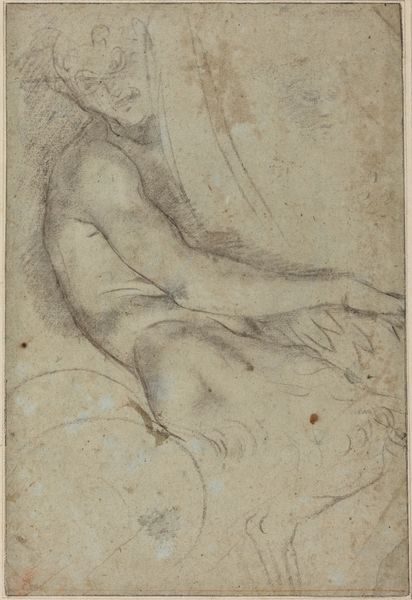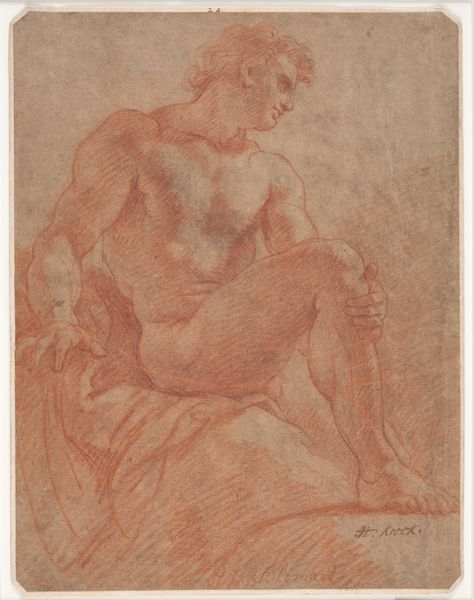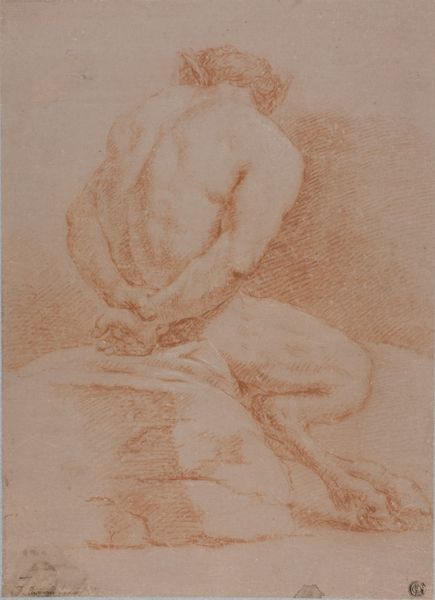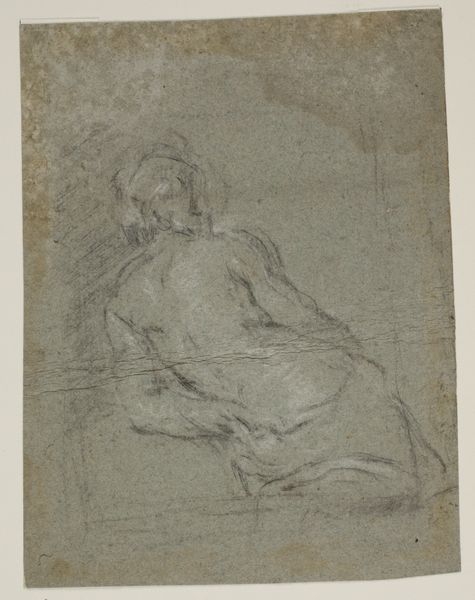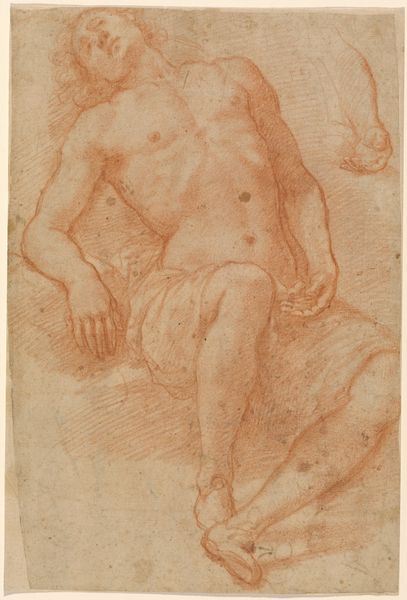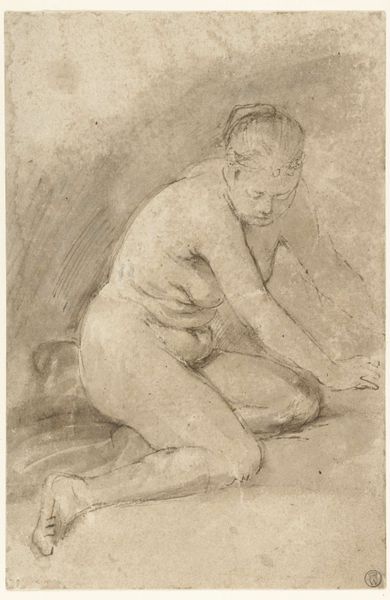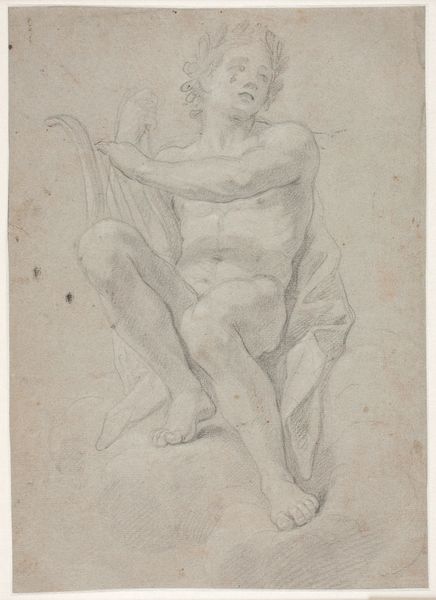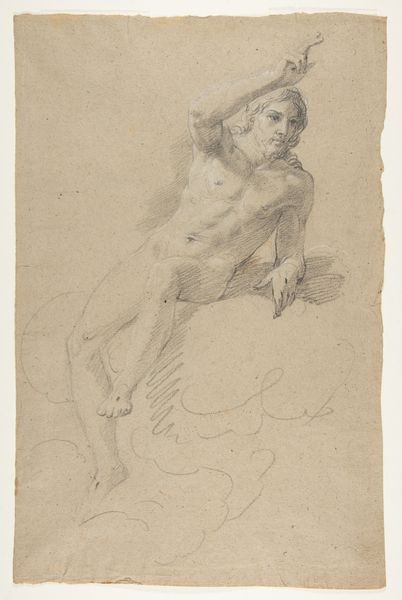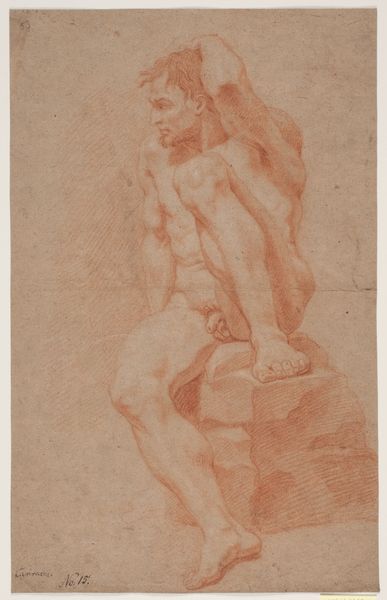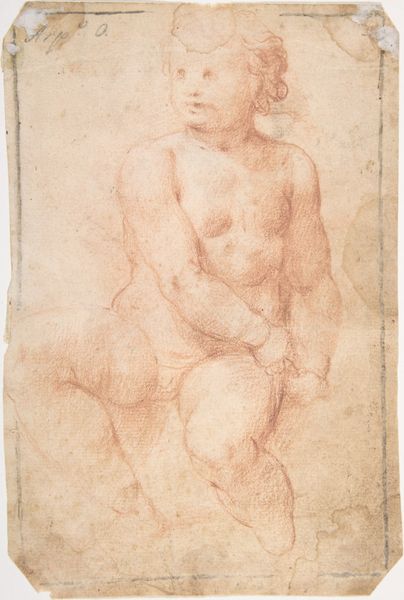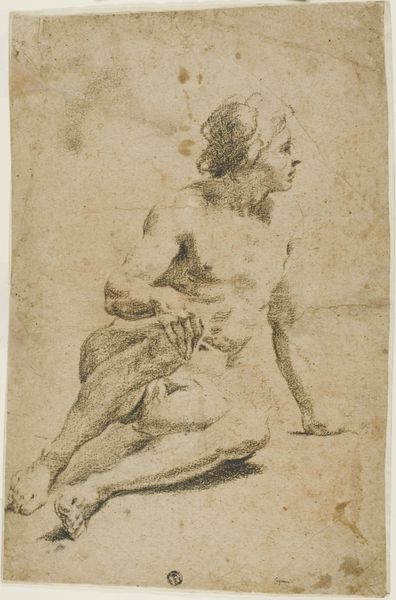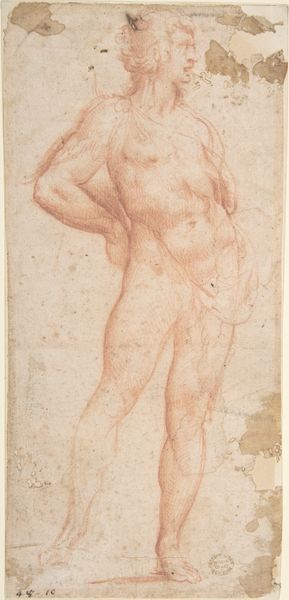
drawing, print, paper, pencil, chalk, charcoal
#
portrait
#
drawing
# print
#
pencil sketch
#
charcoal drawing
#
figuration
#
paper
#
11_renaissance
#
charcoal art
#
pencil drawing
#
pencil
#
chalk
#
charcoal
#
nude
Dimensions: 273 × 205 mm
Copyright: Public Domain
Curator: The artwork before us, simply titled "Seated Angel," is rendered in pencil, chalk, and charcoal on paper. Its creator is Mario Balassi. Editor: My immediate thought is one of intimacy. There's a casualness to the pose, almost as if we've interrupted the angel in a private moment. Curator: Absolutely. The artwork immediately pulls the viewer into its quiet world through its approachable form. Let’s not ignore the angel’s ambiguous form as an artistic device to convey grace, freedom, and an uncanny form of transcendence. Do you believe this choice of visual language could suggest anything about the religious and social environments back then? Editor: I see that, but I am more curious about Balassi’s particular usage of materials here. Note the contrasting rough strokes of charcoal against the delicate lines of pencil. It produces a tangible sense of light, while reminding us about labor involved in making it. The labor in bringing this form to the page! Curator: Precisely! Balassi's mark-making adds to this piece’s inherent expressiveness, and the image successfully bridges Renaissance notions of the ideal form, but filtered through 17th-century aesthetics, with less hard edges and much more movement. Editor: I agree on its success, although I believe it relies on an established tradition to be considered that. Speaking about marks, notice how the figure feels quite solid yet unfinished? It’s more sketch than completely rendered, thus creating a compelling juxtaposition between its divine subject matter and earthly production, all by simply focusing on highlighting certain forms instead of meticulously rendering them! Curator: Indeed. "Seated Angel" offers a glimpse into artistic representation of the spiritual using familiar materials, filtered through historical context. It demonstrates how power structures like the church and art markets shape cultural expression. Editor: And from my perspective, Balassi used the very earthly means of chalk and charcoal to realize such divine representations. It is that tangible process of bringing divine iconography through earthly materials that I found most moving here.
Comments
No comments
Be the first to comment and join the conversation on the ultimate creative platform.
